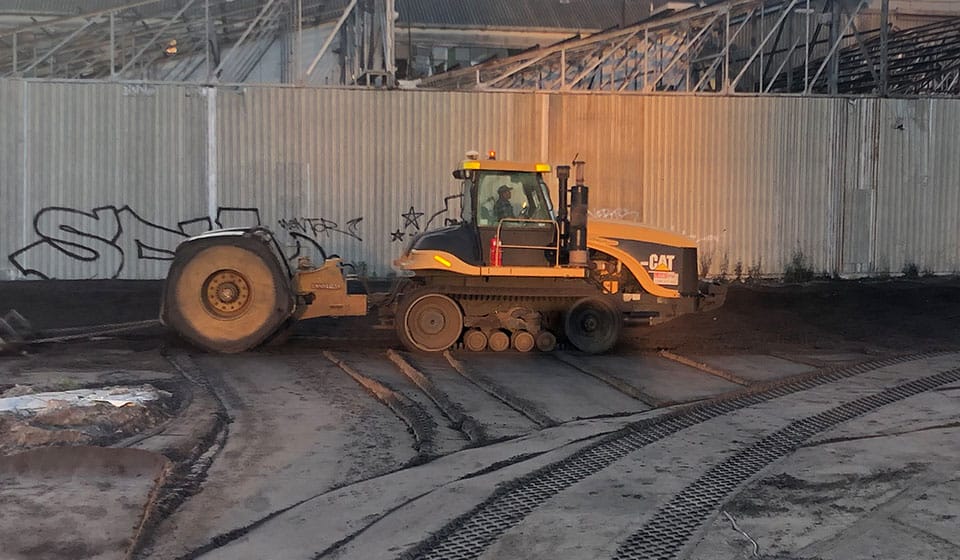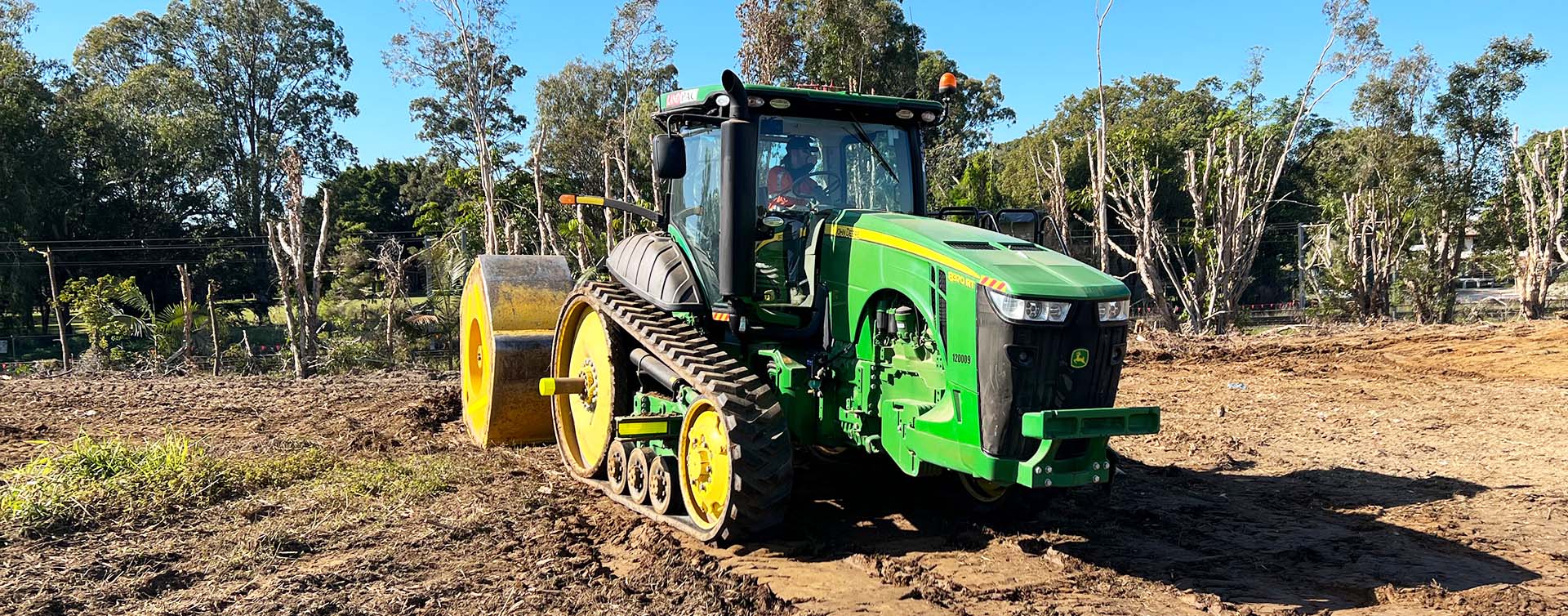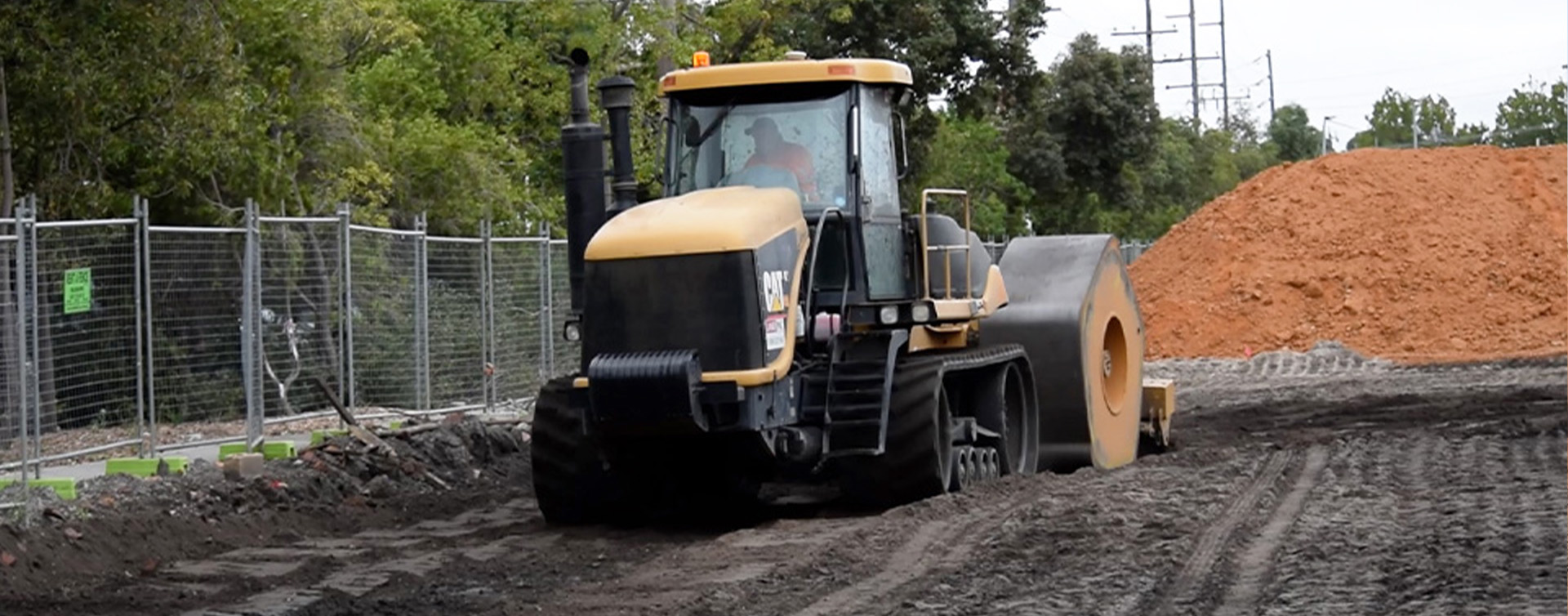Management of Dredged Sands with HEIC
The Role of High Energy Impact Compaction in the Management of Dredged Sands
The effective management of dredged sands poses significant challenges and opportunities for construction and environmental projects alike. High Energy Impact Compaction (HEIC) has emerged as a viable technique to manage and utilise this material, enhancing its engineering properties and enabling its re-use in a wide range of applications.

Understanding Dredged Sands
Dredged sands are materials extracted from bodies of water such as rivers, seas, harbours, or lakes during dredging operations. Dredging is primarily performed to deepen or maintain navigable waterways, or to replenish sand on public beaches.
Dredged sands can vary significantly in composition and characteristics based on the source and the nature of the underwater soil or sediment. Nonetheless, they often contain a high proportion of sand, potentially mixed with silt, clay, or gravel, and sometimes with traces of organic material or pollutants.
The Challenge of Dredged Sands
Without proper management, dredged sands can pose environmental risks, especially when they contain contaminants. Moreover, the physical characteristics of dredged sands, such as high moisture content and low compaction, can make them unsuitable for direct use in construction projects.
HEIC, with its ability to deliver powerful compaction energy, offers a promising solution for improving the characteristics of dredged sands, making them a valuable resource for various construction applications.
Benefits of HEIC for Dredged Sands
Increased Density and Load-bearing Capacity
HEIC significantly increases the density of dredged sands, thereby enhancing their load-bearing capacity. This makes the material suitable for use in applications like land reclamation, road construction, and building foundations.
Reduced Permeability
HEIC reduces the permeability of dredged sands, making them less susceptible to issues such as water infiltration or seepage. This is especially beneficial in applications such as embankments or landfill liners.
Enhanced Environmental Safety
By compacting dredged sands, HEIC helps encapsulate any potential contaminants, reducing their mobility and the risk of environmental harm.
Cost-Effective Material Utilisation
By improving the engineering properties of dredged sands, HEIC enables the material to be re-used in construction projects. This not only contributes to sustainable resource management but also provides significant cost savings.

The Transformative Impact of High Energy Impact Compaction
High Energy Impact Compaction (HEIC) stands as a transformative solution in dredged sand management. By addressing the inherent challenges these materials present, such as environmental risks and unsuitability for construction, HEIC not only mitigates potential hazards but also adds substantial value to what was once considered problematic. The enhanced density, reduced permeability, and improved load-bearing capacity of dredged sands post-HEIC treatment make them a viable resource for diverse construction applications, including land reclamation and road building.
Moreover, the encapsulation of contaminants through compaction underscores HEIC’s role in promoting environmental safety. This technique’s contribution to sustainable resource utilisation and cost-efficiency further solidifies its importance. Ultimately, HEIC’s ability to transform dredged sands into a beneficial asset exemplifies innovative engineering, aligning with goals of sustainability and environmental stewardship. As Landpac and others continue to leverage HEIC, the future of dredged sand management looks increasingly promising, balancing the demands of construction with the imperatives of ecological conservation.
Keep communities safe with non-intrusive infrastructure
If adverse soil conditions are detected that could bring risk to people or the environment, HEIC allows compaction without the need to unearth or disturb what’s underneath. Get in touch to find out more.
Latest news

Ground Improvement Solutions
Ground improvement is a fundamental aspect of civil and geotechnical engineering, crucial for ensuring the stability and integrity of construction projects such as roads, buildings, bridges, or residential areas.

Reviving Land with Purpose and Precision
Land rehabilitation represents a critical environmental endeavor, aiming to restore the natural state of land after the ravages of mining or other forms of degradation.

Deleterious Material Sites with HEIC
One primary concern with deleterious materials is their containment. HEIC plays a pivotal role here, compacting the soil to form a denser barrier.
